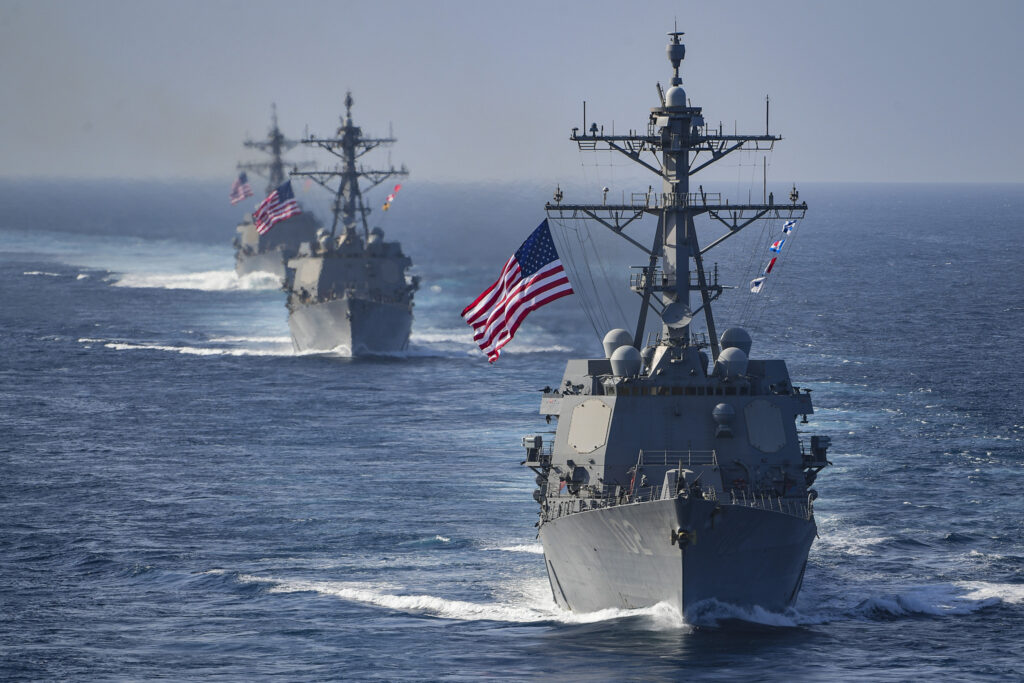CBO: Navy Shipbuilding Plan Off — By $200 Billion
Posted on

WASHINGTON: The Navy would have to spend $200 billion more — a 31 percent boost each year — over the next 30 years to reach its goal of 355-ships, a sharply higher number than the $660 billion the Navy currently projects it will spend, the Congressional Budget Office says.
But the estimated $865 billion comes with a huge asterisk. The CBO, whose estimates are highly respected, assumes the Navy is going to buy the carriers, destroyers, amphibs, submarines, and logistics ships outlined in its 2019 shipbuilding plan. But recent comments by the Marine Commandant and Navy leaders make that look increasingly unlikely. The Navy Department wants to experiment with large unmanned ships and rethink how and if their big hulls would survive a fight with a peer enemy using precision medium- and long-range missiles.
Overall, the Navy currently has 290 ships, and will have to buy 304 ships by 2034 in order to hit the 355.
To get there, the CBO estimates, new ship construction would cost an average of $31 billion per year — or 31 percent more than the Navy’s estimate of $22 billion annually. The difference between the CBO’s and the Navy’s estimates is due to different methodologies used to estimate ship construction, along with a different view of what capabilities might be needed on future ships, the CBO says. Specifically, the Navy “does not account for the faster growth in the costs of labor and materials in the shipbuilding,” in its cost estimates.
Earlier this year, Vice Adm. William Merz, deputy chief of naval operations, offered a sobering reality check on how the Navy is struggling to figure out how it can grow, giving credence to the CBO’s decision to include factors in modeling cost that the service has ignored.
“We don’t have the complex modeling to even understand what all of these costs are going to materialize over the next 20 years,” he said, but the service is “working hard to converge on a model” to sustain the ships over the long haul. The planning process is “much more challenging than anyone realized,” he said, “but we’re much smarter about our business” than the department was just a few years ago.
Building and sustaining a radically higher number of ships will be made even more difficult due to what are expected to be flat budgets in the coming years. The growing federal deficit will also put a major squeeze on the federal government. The deficit for 2019 grew to $984 billion, or 4.7 percent of GDP, the highest since 2012, the CBO estimated this week in a separate analysis. That’s a full 26 percent higher than the 2018 deficit and 48 percent above 2017.
One financial issue Navy leadership says it’s not overly concerned about at the moment is the Continuing Resolution currently funding the government while Congress struggles to agree how to fund the fiscal 2020 budget.
Speaking at an industry conference on Tuesday, Navy acquisition chief James Geurts told reporters the CR should not impact any major shipbuilding programs. “A CR always causes inefficiencies for us, whether it’s delaying new starts until we get new start authority, or in ship maintenance having to split up different awards.” But, he added, “we’ll figure out how to deal with the CR.”
The forthcoming Force Structure Assessment will be a joint project between the Navy and Marine Corps, outlined briefly in a recent memo by Commandant Gen. David Berger and Chief of Naval Operations, Adm. Mike Gilday. An “interim” study was due to be wrapped up at the end of September, the duo said, then war gamed in November, and incorporated into a document slated to be released by the end of this year, according to the memo.
The new report would take some cues from Berger’s Commandant’s Guidance, which called into question the traditional role large, lightly defended amphibs will play in the future, while calling for new classes of unmanned vessels to be pushed into the fleet as soon as possible.
Subscribe to our newsletter
Promotions, new products and sales. Directly to your inbox.
